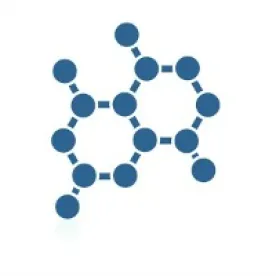Dow Chemical Company (“Dow”) lost a ruling that competitor NOVA Chemical Corporation and NOVA Chemicals Inc. (collectively “NOVA”) infringed claims of two Dow patents when the Federal Circuit applied the U.S. Supreme Court’s new definiteness standard set forth in Nautilus, Inc. v. Biosig Instruments, Inc., 134 S. Ct. 2120 (2014)(“Nautilus”). Dow Chemical Co. v. NOVA Chemicals Corp. (Fed. Cir., August 28, 2015). The court held the claims indefinite under 35 U.S.C. § 112, and reversed the trial court’s award of supplemental damages.
Novel Polymer Compositions
Dow sued NOVA alleging infringement of U.S. Patent Nos. 5,847,053 (the ‘053 Patent) and 6,111,023 (the ‘023 Patent). The patented technology relates to ethylene polymer compositions with improved modulus, yield strength, impact strength, and tear strength. Claim 6 of the ‘053 Patent and claim 1 of the ‘023 Patent were deemed representative. Claim 6 of the ‘053 Patent recites (emphasis added):
6. An ethylene polymer composition comprising
(A) from about 10 percent (by weight of the total composition) to about 95 percent (by weight of the total composition) of at least one homogeneously branched linear ethylene/α-olefin interpolymer having: (i) a density from about 0.89 grams/cubic centimeter (g/cm3) to about 0.935 g/cm3, (ii) a molecular weight distribution (Mw /Mn) from about 1.8 to about 2.8, (iii) a melt index (I2) from about 0.001 grams/10 minutes (g/10 min) to about 10 g/10 min, (iv) no high density fraction, (v) a single melting peak as measured using differential scanning calorimetry, and (vi) a slope of strain hardening coefficient greater than or equal to 1.3; and
(B) from about 5 percent (by weight of the total composition) to about 90 percent (by weight of the total composition) of at least one heterogeneously branched linear ethylene polymer having a density from about 0.93 g/cm3 to about 0.965 g/cm3.
Claim 1 of the ‘023 Patent recites (emphasis added):
1. An ethylene polymer composition comprising (A) from about 10 percent (by weight of the total composition) to about 95 percent (by weight of the total composition) of at least one ethylene interpolymer having: (i) a density from about 0.89 grams/cubic centimeter (g/cm3) to about 0.935 g/cm3, (ii) a melt index (I2) from about 0.001 grams/10 minutes (g/10 min.) to about 10 g/10 min., (iii) a slope of strain hardening coefficient greater than or equal to 1.3, and (iv) a Composition Distribution Branch Index (CDBI) greater than 50 percent; and
(B) from about 5 percent (by weight of the total composition) to about 90 percent (by weight of the total composition) of at least one ethylene polymer characterized as having a density from about 0.93 g/cm3 to about 0.965 g/cm3 and comprising a linear polymer fraction, as determined using a temperature rising elution fractionation (TREF) technique.
Each of representative claims 1 and 6 recites the element that the polymers have a “slope of strain hardening coefficient greater than or equal to 1.3.” NOVA argued that the claims were indefinite because the “patents fail to teach a person having ordinary skill in the art how to measure the ‘slope of strain hardening,’ which is required to calculate the strain hardening coefficient.” Slip Op. at 5-6.
The Federal Circuit agreed, citing the Supreme Court’s recent Nautilus decision that changed the standard for indefiniteness under 35 U.S.C. § 112. The court noted that:
The [Supreme] Court abrogated our previous inquiry into whether the claims were ‘amendable to construction’ or ‘insolubly ambiguous,’… which we applied in cases such as Exxon [Exxon Research & Engineering Co. v. United States, 265 F.3d 1371 (Fed. Cir. 2001)] …. Under the new standard, ‘a patent is invalid for indefiniteness if its claims, read in light of the prosecution history, fail to inform, with reasonable certainty, those skilled in the art about the scope of the invention..’ Nautilus, 134 S. Ct. at 2124.
Slip Op. at 6-7.
The Federal Circuit also noted the Supreme Court’s statement that “’[i]t cannot be sufficient that a court can ascribe some meaning to a patent’s claim; the definiteness inquiry trains on the understanding of a skilled artisan at the time of the patent application, not that of a court viewing matters post hoc.” Slip Op. at 16, citing Nautilus at 2130, emphasis in original.
In holding the claims indefinite, the court noted that neither the patent specification nor the prosecution history taught how to determine the slope of strain hardening. Moreover, there were four methods to determine the slope of strain hardening, three known in the art and one developed by Dow’s scientist (and expert at trial), and each of the four methods may produce different results. In the court’s opinion, because the four methods do not always produce the same results, the method chosen could affect whether or not a given product infringes the claims.
The court also noted that its analysis in this decision is similar to the its prior ruling applying the Nautilus standard. In Teva Pharm., USA, Inc. v. Sandoz, Inc., 789 F.3d 1335 (Fed. Cir. 2015), the court determined that the term “molecular weight” rendered the claims indefinite because “[n]either the claims nor the specification contained an explicit definition of molecular weight, … and the prosecution history contained inconsistent statements.” Slip Op. at 24.
No Doctrine of Law of the Case or Issue Preclusion
This decision is the second time the parties were before the Federal Circuit to determine infringement and validity of the asserted patents. A jury found the asserted claims infringed and valid. NOVA appealed the Federal Circuit and the court affirmed. NOVA’s petition for certiorari was denied by the Supreme Court. A bench trial was subsequently held for the supplemental damages through the period of expiration of both patents. The district court granted supplemental damages to Dow. NOVA appealed and Dow cross-appealed to the court.
After this second appeal was filed, the Supreme Court’s Nautilus decision issued, altering the standard for definiteness. The Federal Circuit determined that the intervening Nautilus decision provides an exception to the doctrine of law of the case or issue preclusion, in that the court may not reevaluate an issue between the parties. The doctrine of claim preclusion also did not apply to the claims for damages for periods of infringement not previously considered by the jury, i.e., the supplemental damages period.
The court further noted that under ordinary circumstances, issue preclusion or law of the case would bar relitigation of the infringement and validity issues. However, as in the present case where the governing law has changed, the doctrines are subject to an exception. Slip Op. at 12.
A Well Drafted Application
Patent applicants should consider Nautilus and its application, especially for claims containing functional language. Drafting applications with a definition section or that defines each term should prevent rejections for alleged indefiniteness during examination or when enforced against competitors. Defining the terms and/or providing examples to determine the scope of all claim elements, should be considered a “best practice” for all patent drafters and, as before, only elements necessary for patentability should be recited in the claims.




 />i
/>i
